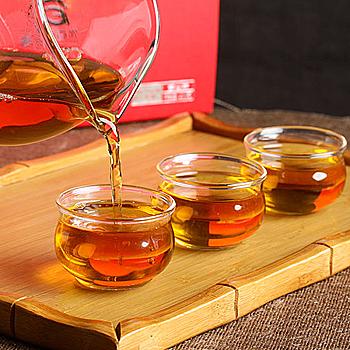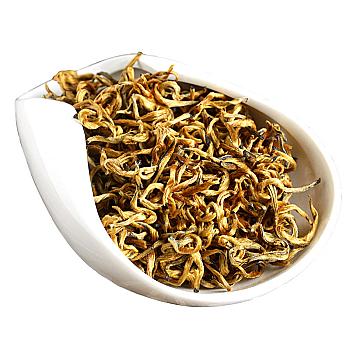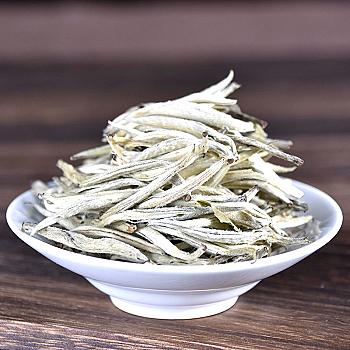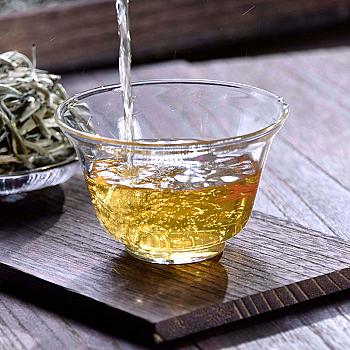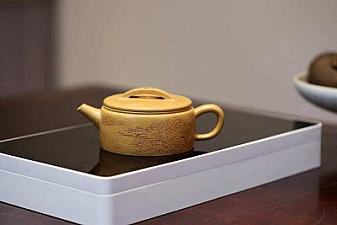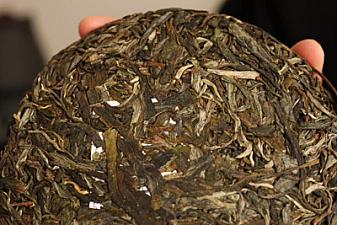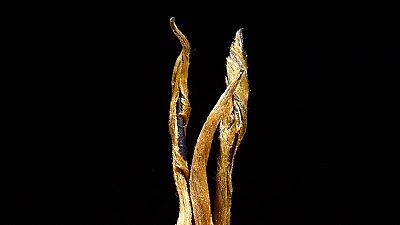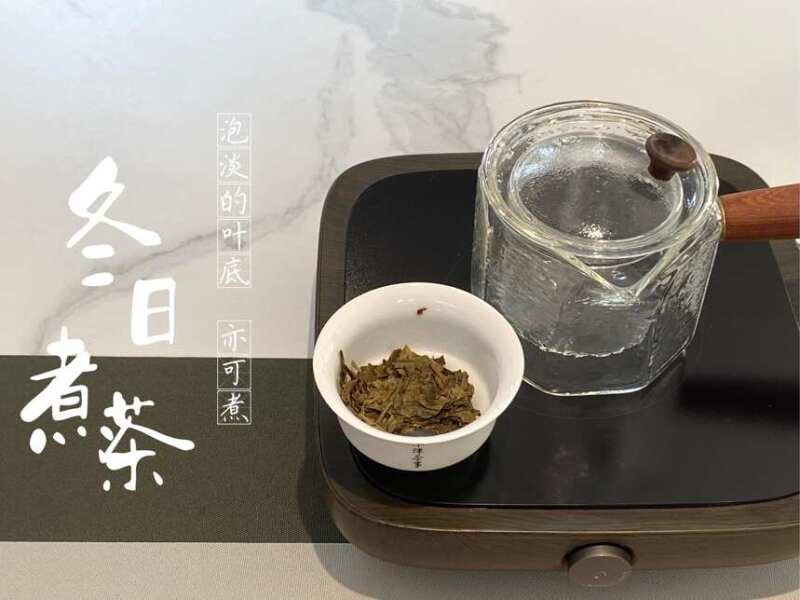
It's easy! The complete guide to making old white tea, only one step, even beginners can understand.
August 14, 2025
Cooling down at home to brew tea is a nice experience. Today, I saw a friend in the circle sharing their brewing experience of tea. "Recently I have brewed many times, and I have tried white tea and Pu'er tea, but haven't tried"

Volume 1
It is winter time and the Winter Solstice is about to arrive.
A new round of cold air is sweeping south.
Taking a cool bath at home and brewing tea is quite an experience.
I saw a friend in my social circle shared her experience about how to boil tea.
“I've been brewing tea a lot lately. I've tried brewing white tea and pu-erh, but not red tea or yunnan tea yet. Brewing one pot of tea fills the entire room with strong tea aroma, it feels really good.”
"Compared to brewing tea, cooking tea is more convenient. Continuous heating can thoroughly extract the soluble flavor substances in the tea leaves, and the tea soup is sweet, soft, moist, sticky, and smooth."
"The method of making tea is simple, no need to brew one by one, a pot can be used for a long time. Besides, brewing tea is also very cost-effective, measuring from the amount of water, it's five or six times as much as usual brewing tea, so as long as you don't deliberately simmer slowly, the tea won't have to worry about being overcooked..."

This experience-sharing was reasonable.
Some teas are not recommended for steeping, but the real reason it's better to boil is due to differences in water and tea ratios.
Compared with andoungpao, a large amount of water is added when brewing tea, which can avoid the bitterness becoming too strong.
However making tea seems simple but it has a lot of details.
To know is not difficult; to practice it is hard.
Using old tea leaves as the main ingredient, there's a lot to say about brewing tea in its entirety.

Volume 2
One, choose tea.
Winter tea white, old white tea is the many fans seat above guest.
Last year's new tea, with its tea flavor still fresh and crisp, with a mainly light and fragrant taste, is not suitable for boiling.
The aged white tea has been ripened for more than three years, its flavor is mild, sweet and mellow.
It is for this reason that when drinking old white tea, steeping and brewing should be done in the same way.
Most tea drinkers prefer to brew old Shou Mei instead of old white tea.
A fragrant and expansive autumnal shape after pressing and aging for several years gives off a rich and mellow date-like aroma.

Even after brewing tea, it can still unlock deeper inner flavors.
The tea has a delicate flavor and a thick smooth taste, suitable for being served as a winter staple tea when needed.
Of course, in addition to brewing tea into a cake, loose tea can be brewed just fine too.
In addition to Old Shoumèi, there are other longevity herbs such as White Hair Needle and White Peony that can be decocted.
However, considering that the silver needle is in short supply and its price is expensive.
To make good use of the fragrance of tea, steep it in a covered bowl, and even if you don't boil the leaves for five or six infusions, it's not too late.

Chapter 3
2, selectors.
Boiling tea and drinking it, basic setup is boiling teapot + boiler kettle.
This winter, the trend of making tea around a small fire in the circle of celebrities is very popular.
For modern life though, using a coal stove to boil water is complicated and less efficient than using an electric pot.

The teapots on sale are in all shapes and materials: iron teapot, clay teapot, glass teapot, purple sand teapot.
Considering the practicality of the masses, heat-resistant glass bottles are preferred.
The price of a glass teapot is very affordable, and it's easy to observe the color of the soup. Its style is versatile, making it an ideal choice for new people trying to cook tea.
For an old tea-drinker like me, brewing tea in a sand pot or rough clay teapot is another way to savor the fun of trying out different flavors.
Besides the teapot and kettle, public cups, small tea cups, insulating mats, tea cases, scales etc. need not be too fussy.
Choose as needed, more than enough.

Volume 4
Three, prepare tea.
Whatever is done beforehand will succeed; if not done beforehand, it won't be accomplished. Cooking tea is just the same.
Prepare the necessary tea leaves in advance before brewing the tea.
After waiting for the pot of water to boil, taking tea and knocking on a biscuit while being hurried will lead to mistakes in the middle.
The amount of tea poured for brewing depends on the situation when brewing the tea.
Boil the leaves at the bottom only need to stir in the remaining leaves in the lid of the pot.
Boil some tea leaves, two or three grams of tea leaves are sufficient when the water is around 400 milliliters. Too much tea leaves will only make the tea too concentrated.

Before brewing tea, find an old tea cake.
Open box, take tea, break into pieces, weigh on a scale.
Put prepared tea leaves into a teapot and keep ready for use.
Weighing done, tea cakes sealed immediately to prevent moisture and leakage.
The aroma of tea is fragrant and rich, the taste is sweet and mellow, there's no strange flavor to it. It doesn't need to be soaked or washed before brewing, nor does it need any other special treatment.
You can directly drink it as tea without any harm.
On the other hand, tea that has acidity, stench, warehouse odor or mixed smell cannot be hoped to be improved by washing and airing.
It's best not to drink them in the first place.

Volume 5
Four, choose water.
Ninety-nine percent of a cup of tea is water.
Soluble in water are compounds with a tea flavor such as polyphenol, theanine and caffeine, present in minute amounts measured in micrograms.
It's not hard to compare them and see how water affects flavor.

Boil the water first, then brew the tea.
Boiling tea is also to boil good water.
Although boiled water is safe for drinking even after being left out at room temperature for several hours.
However, when brewing or boiling tea, spring water is still worth sparing.
Using mountain spring water to brew tea makes the tea soup even clearer and sweeter when consumed.
Ordering bottled pure water for brewing tea can fully present the flavor of a good cup of tea.

Six
Five, tea-serving sequence.
In a Chinese teacup set, the cup or teapot is used for brewing tea by first pouring in loose leaves and then adding water afterwards.
If you brew a green tea in a glass cup, it becomes complicated with terms like "upper pour" (first pouring water then the tea), "middle pour" (pouring half of the water first and then the tea, followed by filling the rest of the water), and "lower pour" (first brewing the tea then pouring the water).
Of course, daily life is still more common with downward casting.
Dry tea volume is light and easily floats on the surface of soup, not conducive to the release of tea flavor in a short period of time.
First pour tea leaves and then evenly add water, so that the tea is wet, and can fully unlock the flavor of tea.
There are two ways of pouring tea while brewing.
One method is using cold water for the tea, similar to boiling pork in a pot of cold water.
One is hot water infuse tea, boiling a pot of clear water first, then pour in tea leaves.
Cold water boiling and hot water boiling have their own advantages.

The inherent tea flavor was consumed in large quantities of leaves at the bottom; ordinary tea with general quality; poured tea amount especially small, only put one or two grams of dry tea into brew……
To avoid a weak flavor of tea brewed with hot water, brewing with cold water will produce better results.
As the water temperature increases, the inherent tea flavor is continuously released and a relatively full-bodied taste can be brewed.
Instead, directly brew with plenty of high-mountain silver needle tea leaves in dry form is recommended with boiling water.
When there are bubbles on the surface of the water, open the lid (be careful not to burn yourself), and add previously prepared dry tea.
When the tea has boiled along with the water, it can be turned off and the tea is ready to drink.
It retains the strength after boiling a pot.
Steeping tea again for another pot of tea yields equally great flavor!

Seven
Six, brewing time.
The time it takes to boil a pot of tea has no fixed limit because there are too many variables involved.
For example, heating methods.
The heating rate is different under different heat sources, such as charcoal furnaces, electric kilns, alcohol furnaces, and gas furnaces.
For example, high or low temperature.
Fire, medium heat, or simmering at low heat, it's different in each case.

For example, how much water is there?
Boil 400ml, 600ml, or just boil 1 L of water?
For example, tea quality.
Good tea with rich inherent tea flavor doesn't need long brewing.
Like a sponge that has been wrung out and is full of water, it only takes a light squeeze to get some water out.
Conversely, if there is not enough internal accumulation, you have to boil for a long time using violence, in order to avoid the tea flavor being insipid and bland.
In general, whether hot or cold water is used for brewing, a pot of tea can be turned off as soon as it reaches vigorous rolling bubbles.
After boiling, you don't need to switch to low heat and simmer slowly again, or the tea flavor will become too thick and heavy!

Eight
Seven, whether to leave the bottom soup.
Boil a pot of tea and pour some out for drinking, but don't pour it all out yet.
But leave a little bit of broth left over so you can simmer it again for the next pot.
This method is called "Lei he tang", or simply "Liù mǔ tāng" (leave mother soup).
Re-steep the tea in the remaining liquid for a second pot, it is helpful to avoid the taste layer break too much when re-cooking.
The previous pot of tea was rich and flavorful, but the next one was instantly lacking flavor, tasting quite bland upon entry.

But there are also people inside who don't support keeping the bottom soup.
Boiled water does not need to be re-boiled multiple times.
Boil the tea and drink it, boil one pot of tea is enough, no need to repeatedly boil.
Actually, there is no absolute limit whether or not to boil tea in soup.
If you want to stay, then stay.
Drink it all up if you don't finish it now.
It is not unreasonable to reheat the tea after it has cooled down completely and then top up with hot water to prevent waste.
If the amount of tea poured in is not much, and there are limited tea substances, only enough for one brewing, then there indeed isn't any leftover dregs soup.
The hot tea freshly brewed is best enjoyed immediately, and it's only at that moment you can truly appreciate its delightful taste!

Chapter 9
Winter is here and many tea friends are fond of making tea, but there's a realistic reason behind it.
The temperature in winter is low, and if tea water poured out isn't drunk up immediately, it will be completely cold after a little while.
When you have watered a pot plant, looked at two pages of a book, and then thought about drinking a cup of tea.
What's wrong? The tea is cold!
The man has gone out and the tea is cold.
Cold tea is hard to make people interested in drinking tea.
Now's a good time for a pot of hot old tea.
After the tea is boiled, continue to keep it warm on the stove.
You can take and drink hot tea as you please at any time, because it's always available.
Sipping hot tea in your hands is a great joy of drinking tea on winter days.
